
UNESCO World Heritage Route
Routes and Paths
Porto and Northern Portugal: discover the UNESCO World Heritage
UNESCO World Heritage includes sites, monuments, historic cities, cultural landscapes, and natural environments of outstanding universal value, recognised for their importance to the shared heritage of humanity.
Porto and Northern Portugal stand out as one of the richest regions in cultural and historical heritage in the country, with several sites recognised by UNESCO. This international recognition reflects the uniqueness and universal significance of monuments, traditions, and landscapes that bear witness to centuries of history, creativity, and the interaction between humans and nature.
Discover the incredible places and traditions—from Porto’s Historic Centre to the Peneda-Gerês National Park, the Alto Douro Wine Region, the craft of Bisalhães Black Pottery, and the exuberance of Podence Carnival. We also suggest an eight-day itinerary that offers the perfect blend of history, culture, nature, and authenticity at every stop.
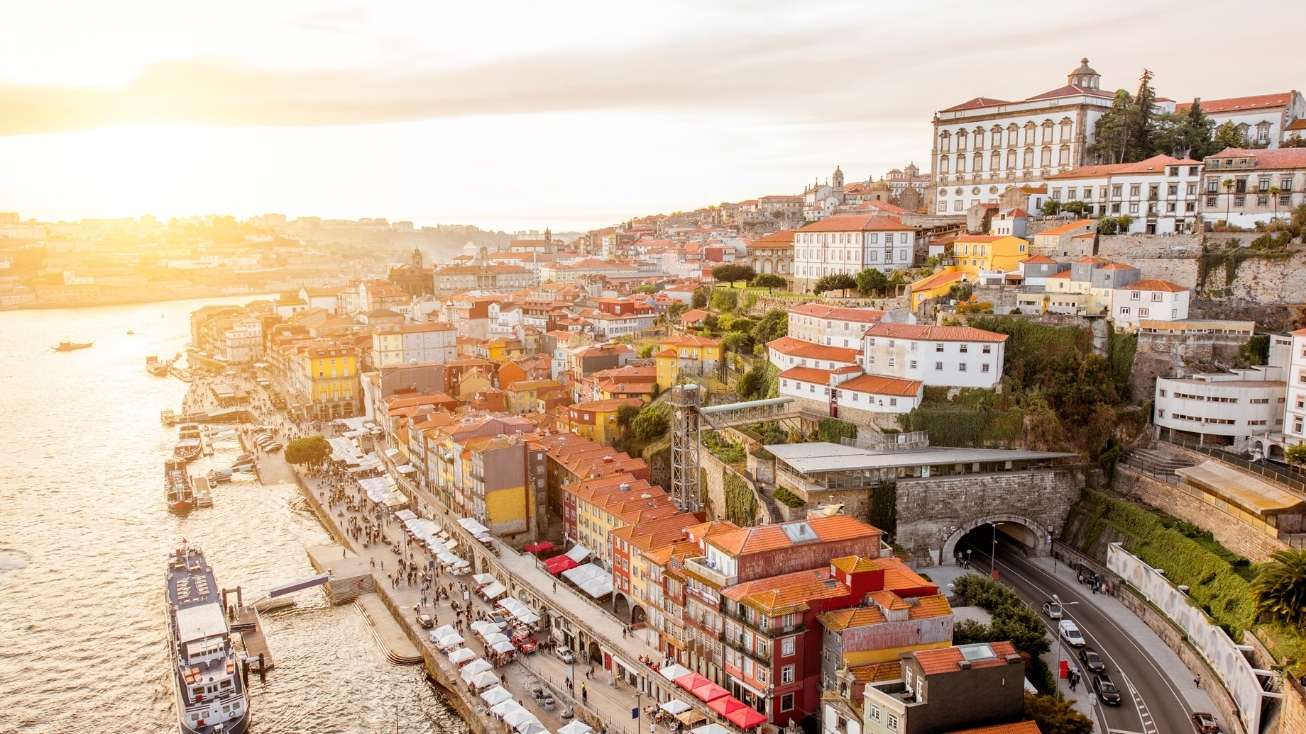
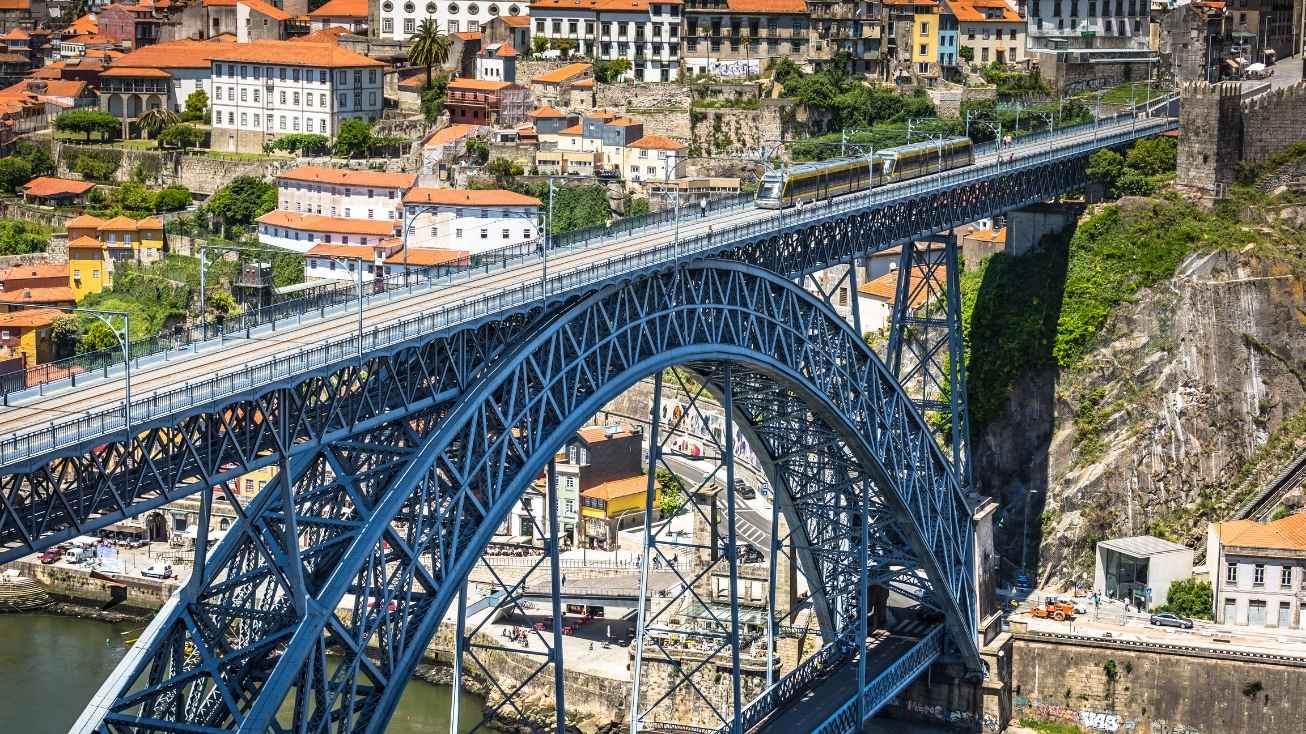
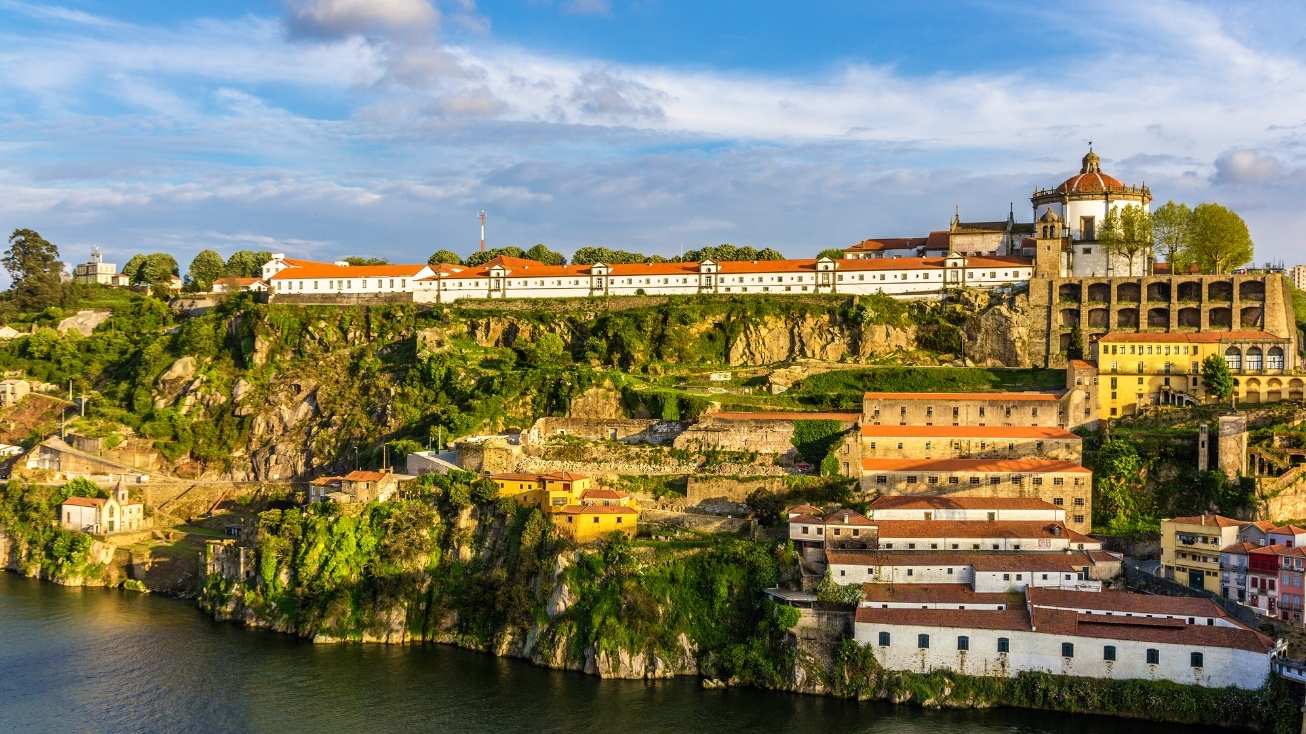
Historic Centre of Porto, Luiz I Bridge and Monastery of Serra do Pilar
The Historic Centre of Porto, along with the Luiz I Bridge and the Monastery of Serra do Pilar, was inscribed on the UNESCO World Heritage List in 1996, confirming the universal value of this unique urban ensemble. The intricate network of medieval streets, centuries-old buildings, and the commanding presence of the Douro River form an exceptional cultural landscape, rooted in a rich history dating back to Roman times and evolving through various historical periods. Authenticity and heritage diversity are reflected in the colourful facades, imposing churches, and architectural details that narrate the story of Porto as a vibrant port city.
The Luiz I Bridge, inaugurated at the end of the 19th century, stands out for its bold iron structure and elegant arch, establishing a vital connection between the two banks of the Douro. It became an icon of engineering of its time and an unmistakable symbol of Porto's identity, appearing in countless images that capture the city. The harmony between the ancient street layout, the multicoloured houses, and the imposing bridge highlights the unique way built heritage interacts with the surrounding landscape.
The Monastery of Serra do Pilar, built in the 16th century on the left bank of the Douro, is notable for its unusual architecture, especially the circular plan of the church and cloister. A Mannerist-style building, it has been adapted over time for various uses, including military functions, yet has retained its historical essence. From the viewpoint next to the monastery, visitors are rewarded with a breathtaking panoramic view, offering a striking perspective of how the city unfolds in terraces along the river.
Authentic experiences in the historic heart of Porto – book your visit
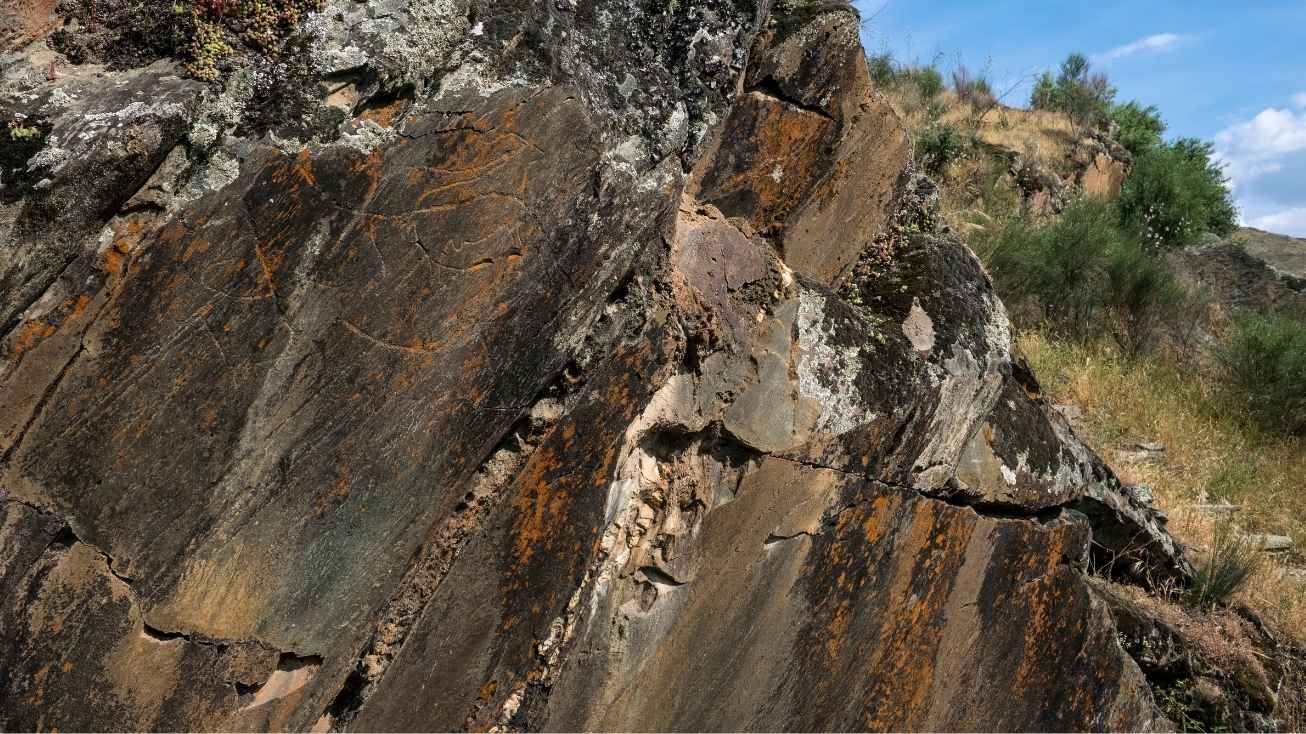
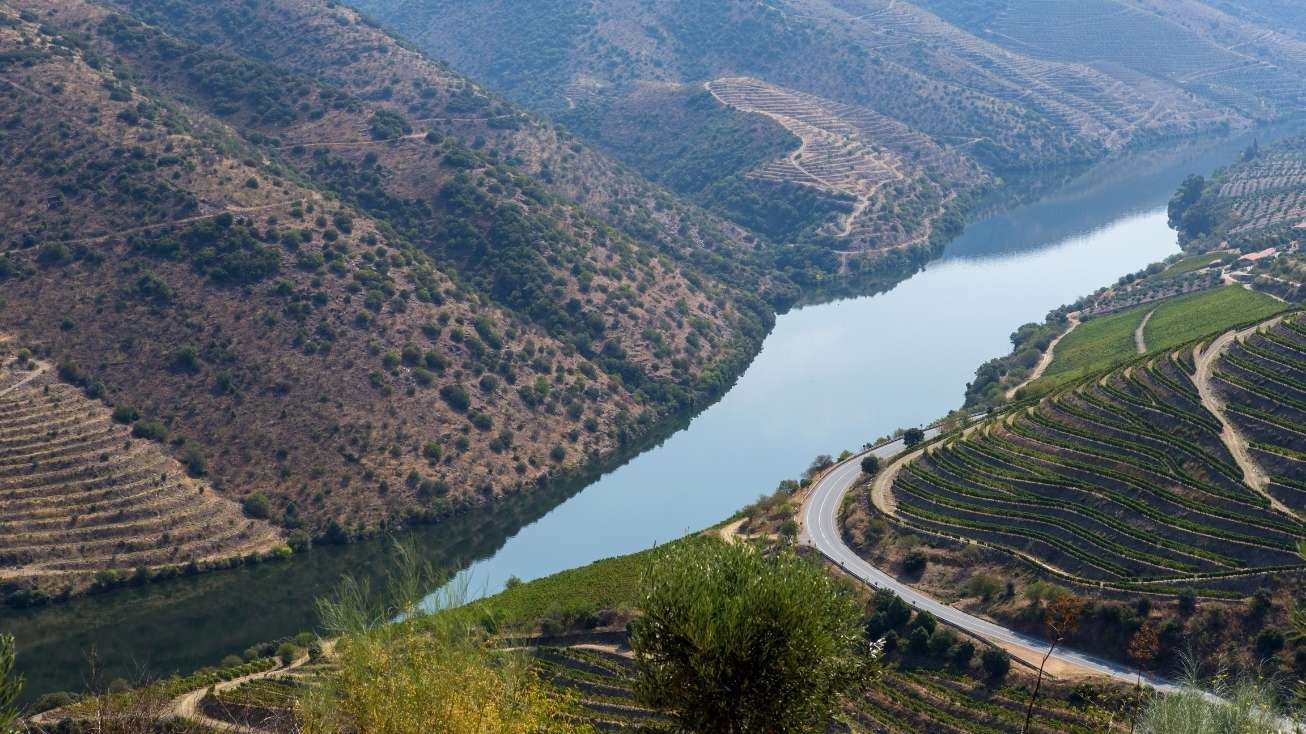
Prehistoric rock art aites of the Côa Valley and Siega Verde
Classified as UNESCO World Heritage Sites in 1998 and 2010
Located in the northeast of Portugal (Côa Valley) and in the province of Salamanca, Spain (Siega Verde), the Prehistoric Rock Art Sites of the Côa Valley and Siega Verde form one of the largest open-air collections of Palaeolithic engravings in the world. They are enduring evidence of the creativity and symbolic expression of human communities that lived over 20,000 years ago, preserving their worldview through representations carved into stone.
In the Côa Valley, the steep riverbanks reveal thousands of animal figures—horses, goats, deer, and aurochs - etched into schist surfaces. Discovered in the 1990s, these artistic manifestations quickly became a landmark case of heritage preservation, leading to the establishment of the Côa Valley Archaeological Park and the cancellation of plans to build a dam that would have submerged the engravings. Since then, ongoing scientific research has deepened understanding of the techniques used, their chronology, and the cultural significance of these engravings, which are considered fundamental to the study of humanity’s earliest artistic expressions in open-air settings.
Secure your entry now – book your tickets online
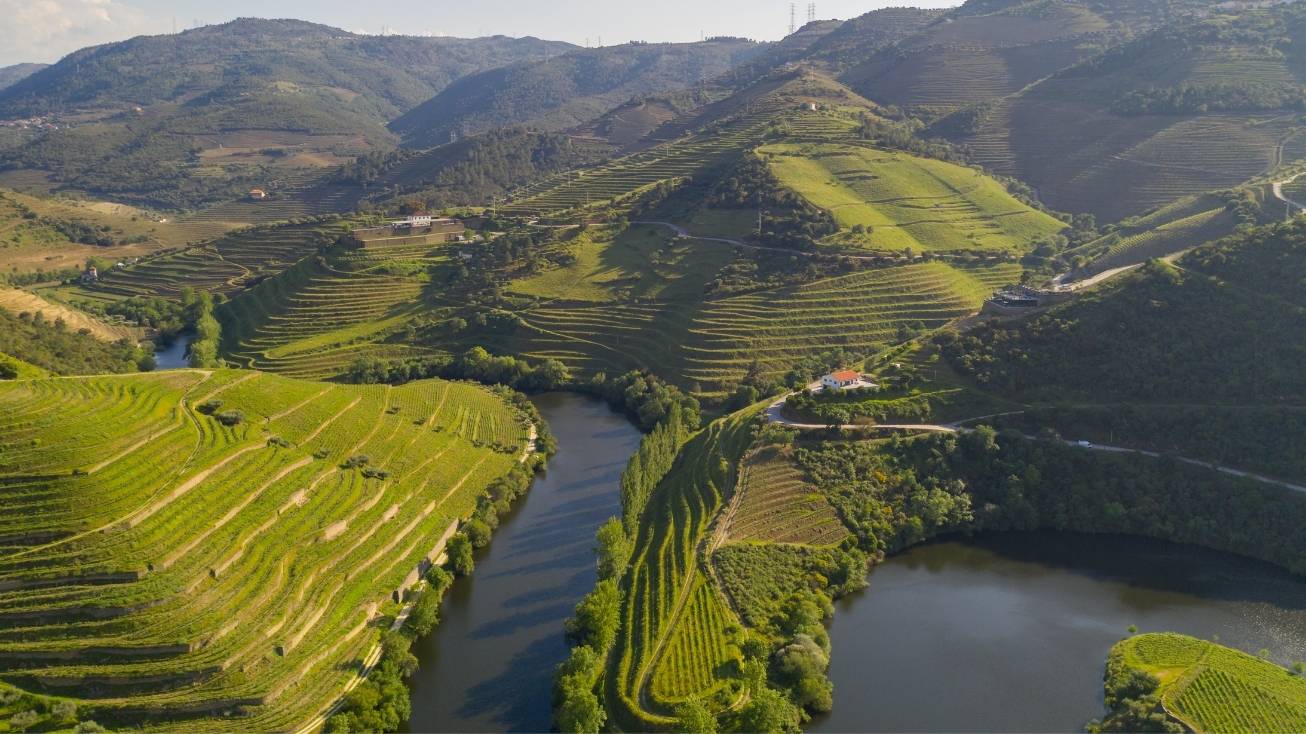
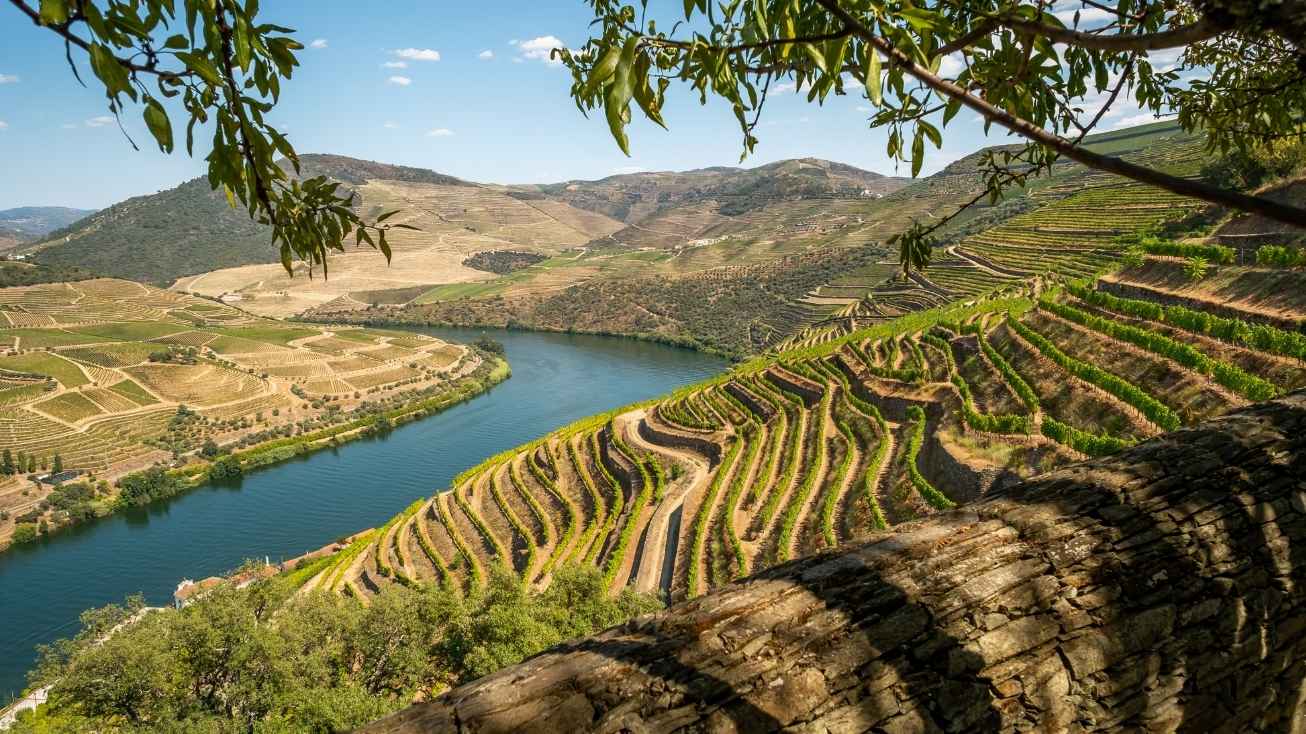
Alto Douro Wine Region
The Alto Douro Wine Region is a living cultural landscape, born from the harmony between nature and human intervention over more than two thousand years of winemaking history. Known as the oldest demarcated wine region in the world (established in 1756), this area is easily recognized by its dramatic terraced vineyards carved into the slopes of the Douro River, where grape varieties are grown to produce the renowned Port wine and other high-quality wines with national and international acclaim.
The uniqueness of the Alto Douro Wine Region stems from the balanced interaction between natural and cultural factors: a hot, dry climate, schist-based geology, and the expertise of local viticulturists are key elements that have transformed this mountainous territory into a mosaic of vineyards and olive groves. The landscape reflects a continuous evolution, where traditional agricultural practices coexist with modern techniques—testament to the region’s ability to adapt to economic and environmental challenges without losing its authenticity.
In addition to its economic value, the region boasts a rich architectural heritage, with historic wine estates (quintas), chapels, manor houses, and traditional villages forming a unique cultural legacy. The banks of the Douro also offer unforgettable experiences for visitors, whether by river cruises, train rides on century-old lines, or scenic road trips that wind through the terraced hills.
Explore the Douro Valley – book your experience
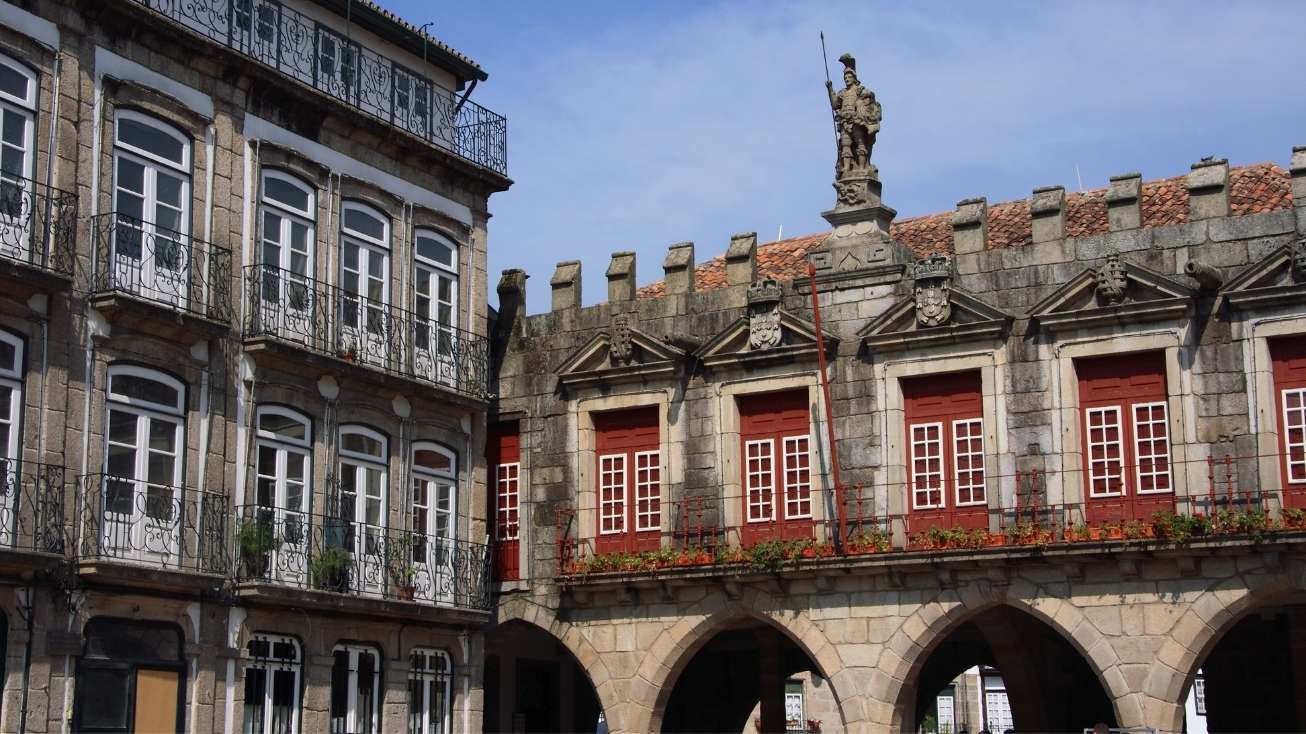
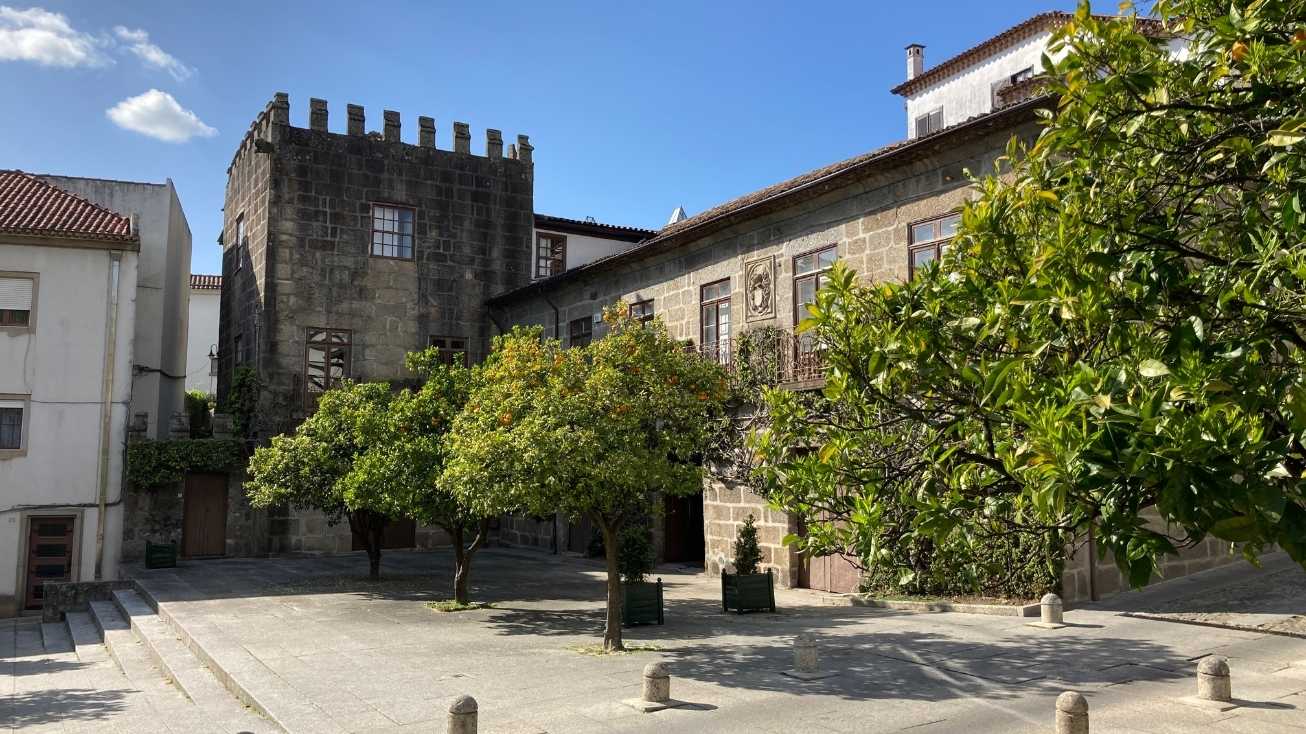
Historic Centre of Guimarães and the Leather Zone
Classified as a World Heritage Site in 2001
The Historic Centre of Guimarães is recognized as one of the best-preserved medieval urban ensembles in Portugal. Known as the “cradle of the nation,” the city is deeply linked to the foundation of the country, a connection visible in its castle, monuments, and emblematic public spaces. The narrow streets, unique squares, and characteristic façades blend in visual harmony, illustrating the evolution of Guimarães from the Middle Ages to the present day.
In addition to the historic urban layout, one of the key elements that contributed to Guimarães' World Heritage status was the preservation and enhancement of the so-called Leather Zone (Zona de Couros). For centuries, this area was home to workshops dedicated to leather tanning—a vital economic activity for the city. Today, that industrial and cultural heritage remains alive through a network of restored buildings that showcase Guimarães' artisanal and manufacturing past. Bridges, tanks, and the old tanning spaces are now integrated into an urban fabric that hosts cultural, museological, and leisure projects.
Discover the heritage of Guimarães with an authentic experience
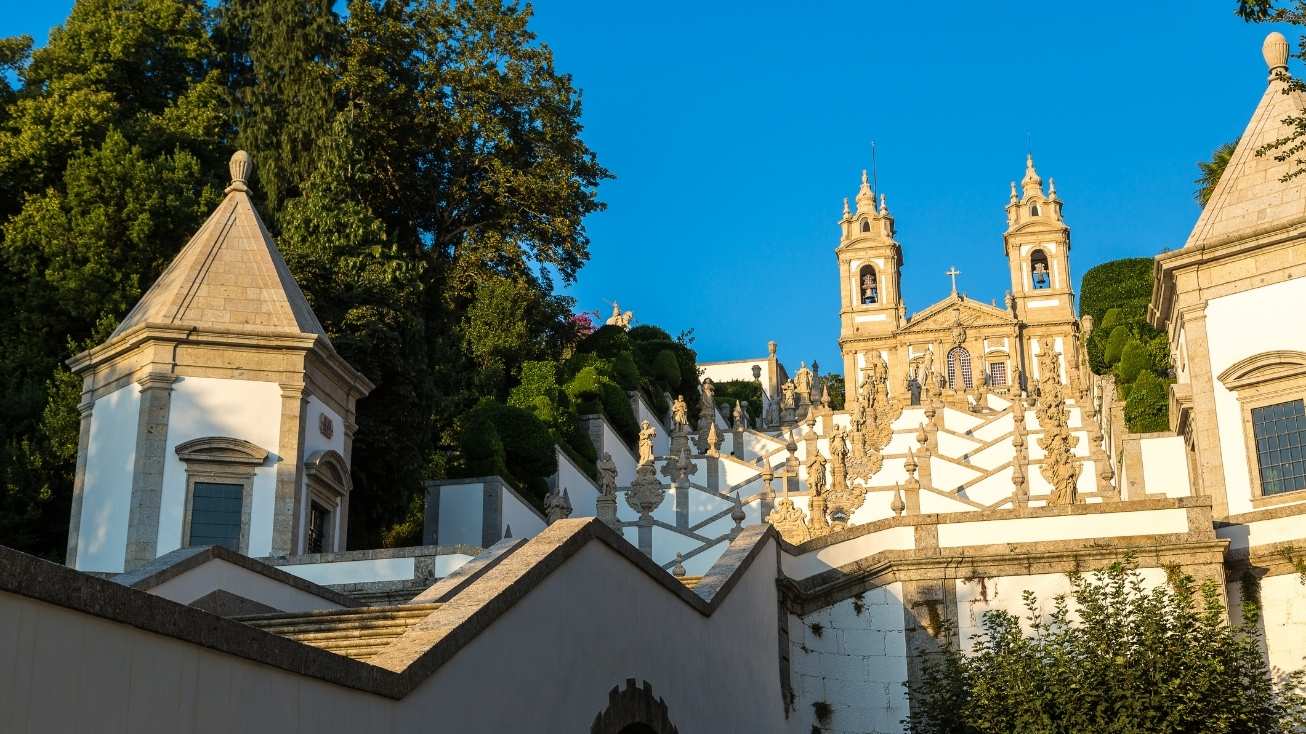
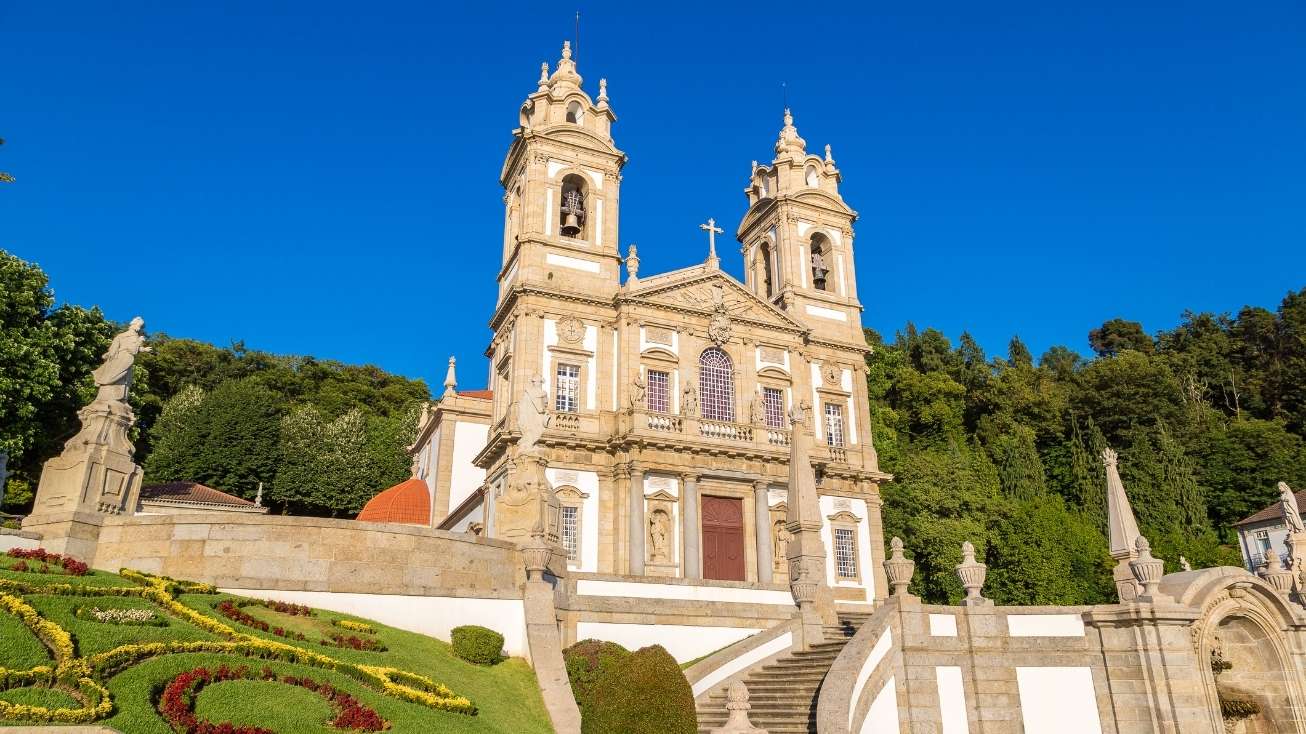
Sanctuary of Bom Jesus do Monte
Classified as a World Heritage Site in 2019
UNESCO’s recognition of the Sanctuary of Bom Jesus do Monte as a World Heritage Site highlights the uniqueness of this architectural, landscaped, and religious complex. Its origins date back to the late 15th century, but it was primarily during the 17th and 18th centuries that the sanctuary took on the form we see today.
One of its most striking features is the monumental Baroque staircase, composed of several themed landings that depict virtues, allegories, and scenes from the Passion of Christ. This zigzagging structure invites pilgrims on a gradual ascent—both physical and spiritual—culminating in the forecourt where the Bom Jesus Basilica stands. The entire composition blends architecture, natural elements, and religious symbolism in a constant dialogue between faith and art.
Surrounded by lush greenery, the Basilica - designed in neoclassical style by Carlos Amarante - crowns the top of the hill, offering breathtaking panoramic views over the city of Braga and the surrounding valleys.
Heritage that leaves a mark – discover Braga through a unique experience
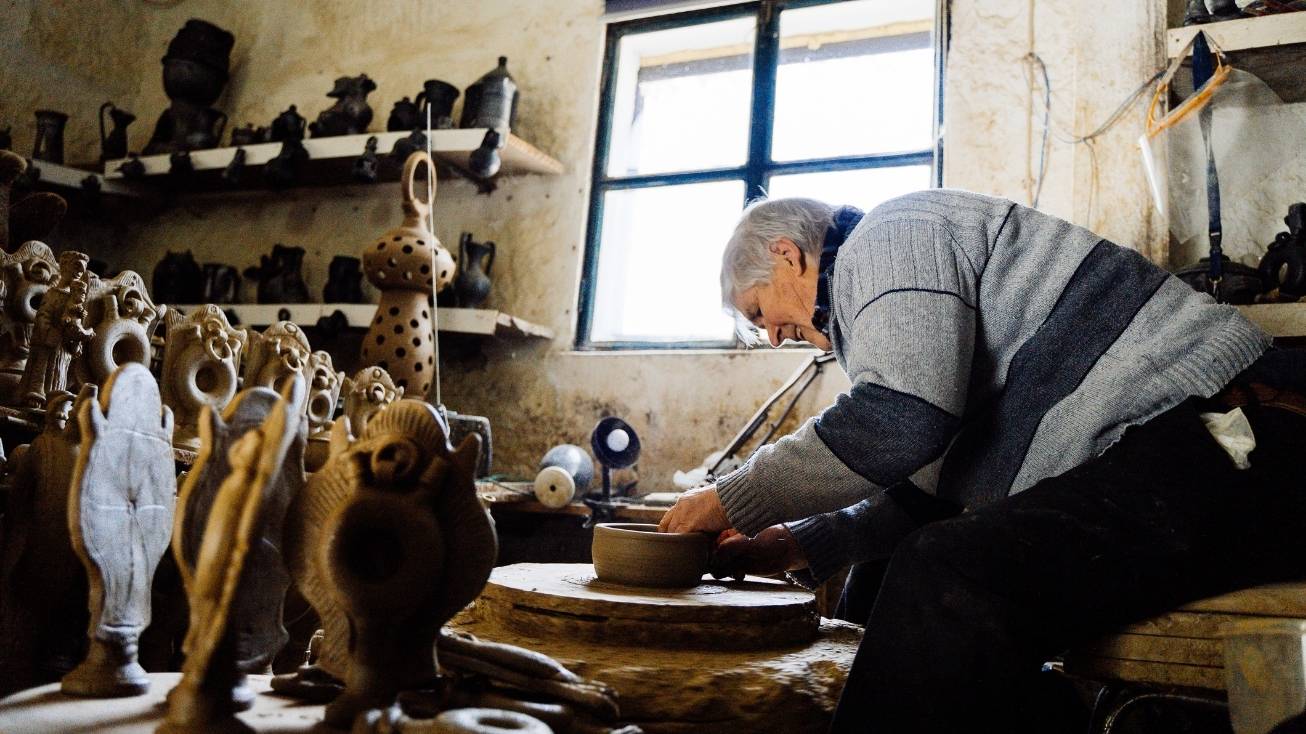
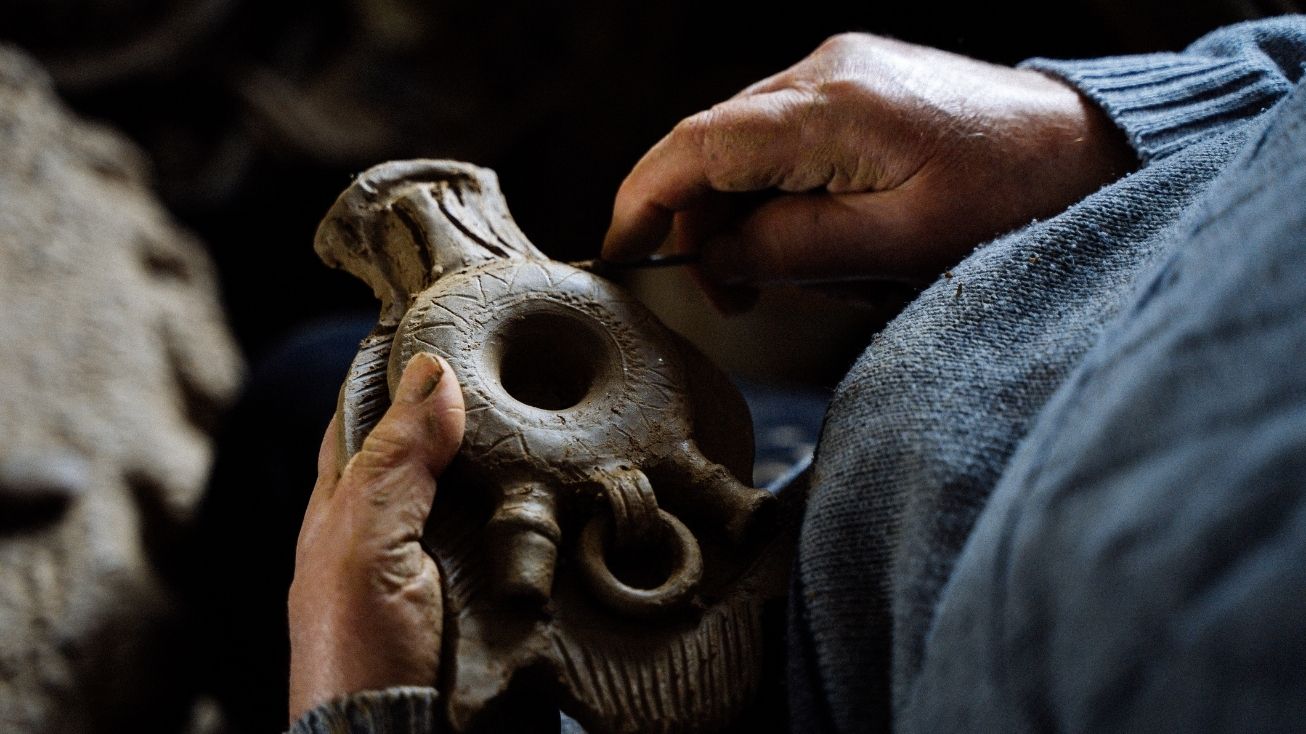
Manufacturing of black pottery from Bisalhães
Inscribed as Intangible Cultural Heritage of Humanity in 2016
The manufacturing process of Black Pottery from Bisalhães, also known as Bisalhães Pottery, is a traditional craft from the municipality of Vila Real, recognized by UNESCO as Intangible Cultural Heritage.
This distinction highlights the importance of preserving a set of techniques and knowledge passed down through generations, encompassing everything from the extraction and preparation of the clay to the open-fire kiln firing. Over the centuries, this art form has shaped the cultural identity of Bisalhães, reflecting the creativity and resilience of the communities dedicated to producing these unique pieces.
The black color, characteristic of Bisalhães pottery, results from a specific firing and smoking process. After being shaped and dried, the clay pieces are placed in rustic wood-fired kilns, where controlled combustion and the addition of carqueja (a native shrub) and other plant materials create a low-oxygen environment.
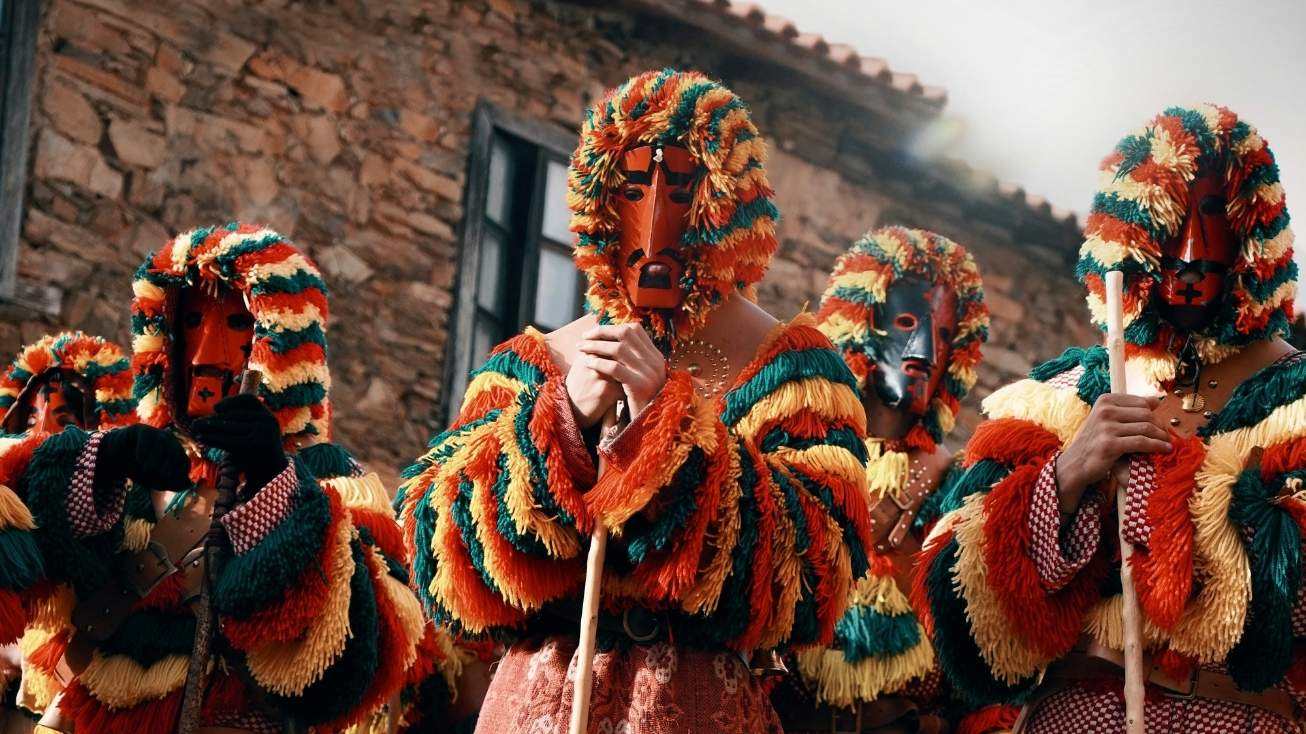
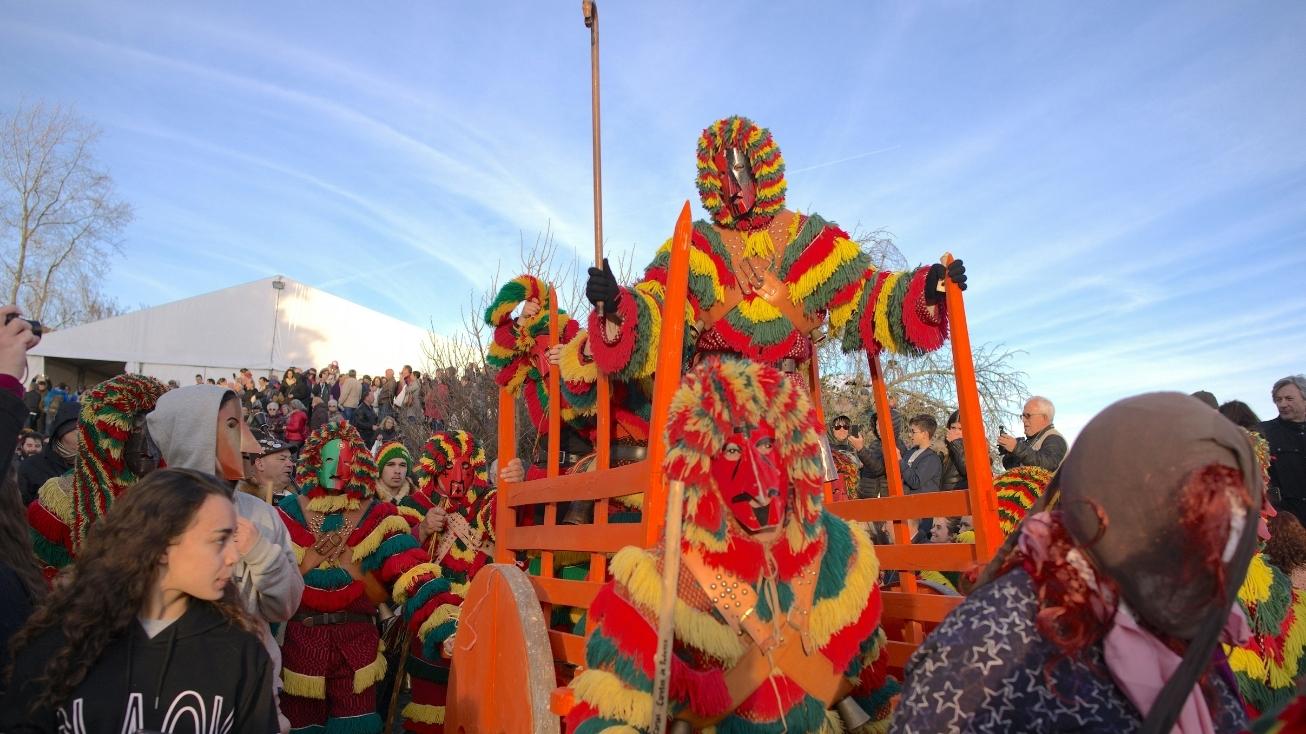
Carnival of Podence
Inscribed as Intangible Cultural Heritage of Humanity in 2019
The Carnival of Podence, held in the village of the same name in the municipality of Macedo de Cavaleiros, has been recognized by UNESCO as Intangible Cultural Heritage of Humanity, underlining the value and uniqueness of this festive tradition.
Rooted in ancient times, the celebration is led by the enigmatic and mischievous “Caretos” – masked figures dressed in vibrant wool costumes and wearing traditional metal or leather masks. They roam the streets jingling cowbells, bringing energy, mischief, and celebration wherever they go.
One of the defining features of this Carnival is the strong sense of community and shared heritage expressed through the Caretos’ rituals and antics. During the festivities, these characters dance, run, and playfully “frighten” passers-by – especially young single women – in a performance filled with traditional music and communal cheer. The active involvement of the local population and the passing down of customs from one generation to the next ensure the continuity of this legacy, blending the annual renewal of the event with the preservation of the most authentic elements of the Podence Carnival.
Explore the Caretos Trail and the Azibo Reservoir – book your visit now
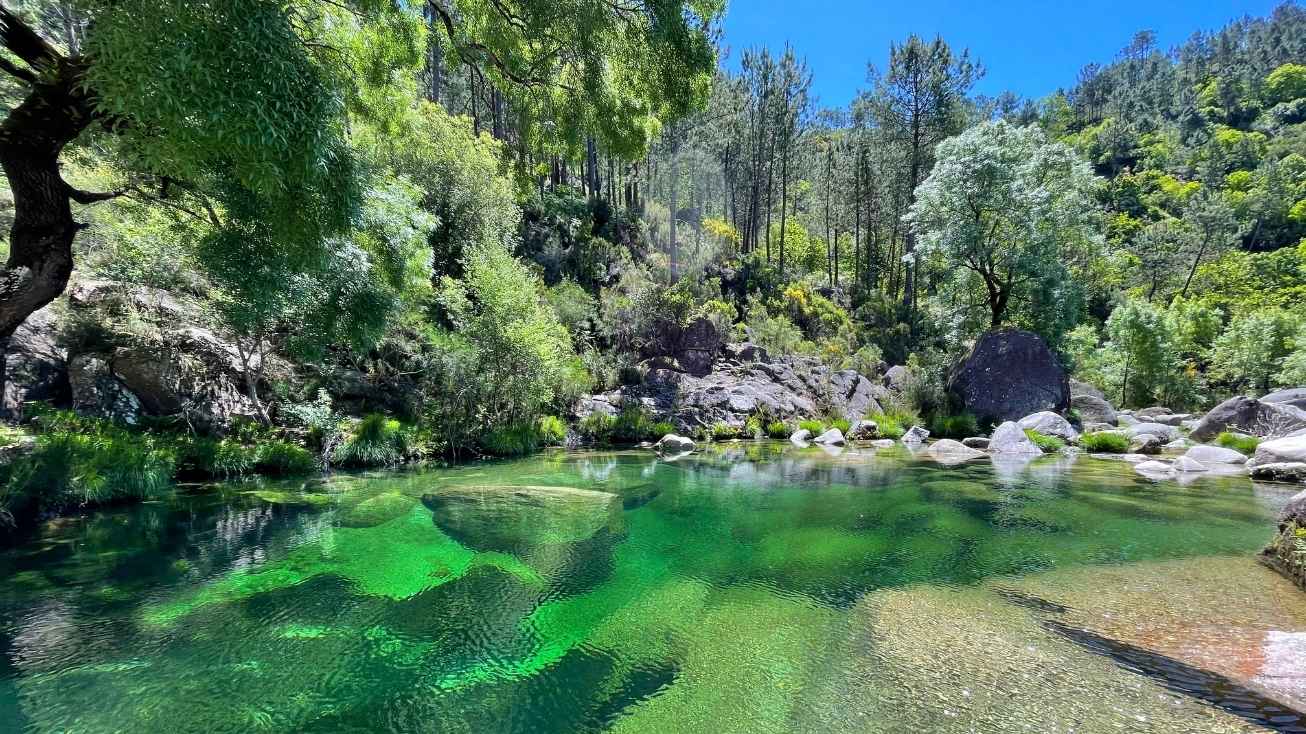
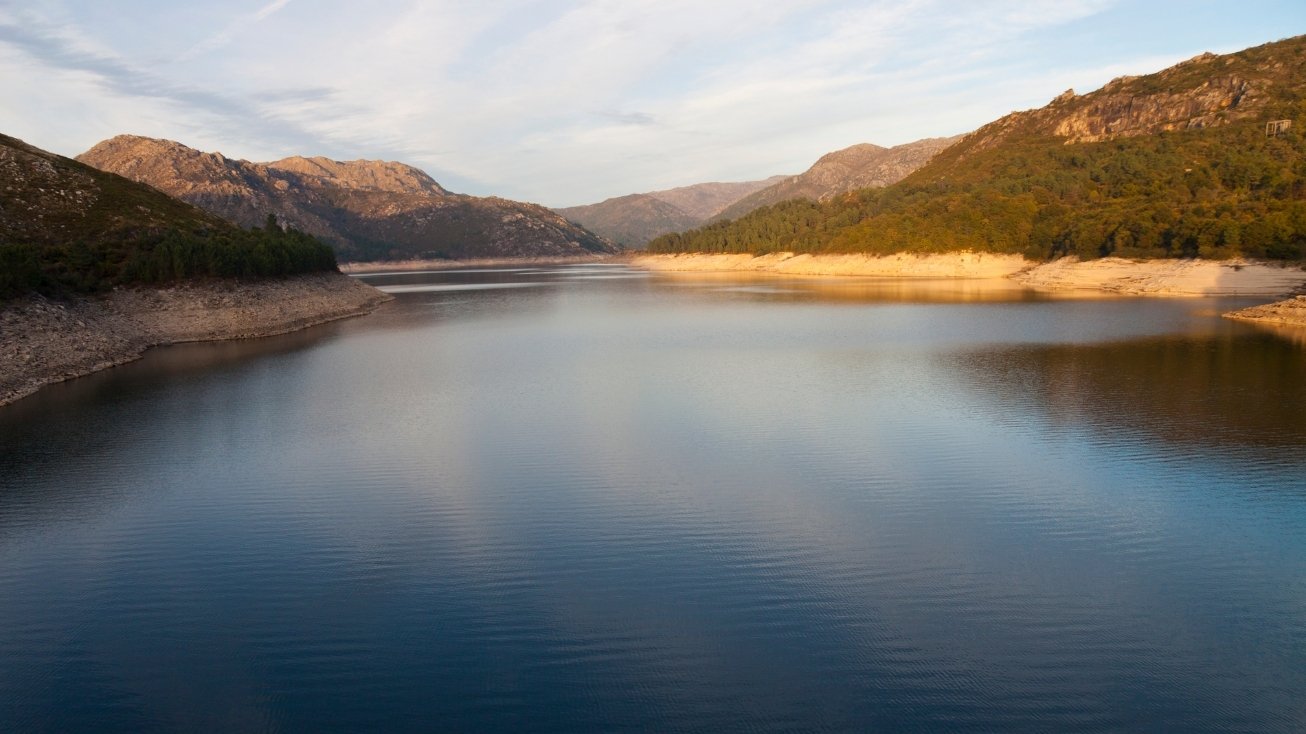

UNESCO Global Geoparks: 2 in Porto and Northern Portugal
UNESCO Global Geoparks are territories of remarkable geological relevance, recognized for their scientific, educational, cultural, and environmental importance. These areas promote the preservation of geological heritage while integrating ecological, historical, and cultural aspects, creating a holistic approach to sustainable territorial management.
In Portugal, these regions stand out as examples of conservation and promotion of the national geological legacy. Discover the two UNESCO-recognized Geoparks located in Northern Portugal.
7 day itinerary through the World Heritage of Porto and Northern Portugal
We suggest an eight-day route that offers a rich and diverse overview of the cultural and natural wonders of Porto and Northern Portugal, encompassing UNESCO World Heritage sites, age-old traditions, and breathtaking landscapes.
Feel free to adjust the duration of each stage according to your own pace and availability, and make the most of unforgettable moments in one of the most authentic and enchanting regions of the country.